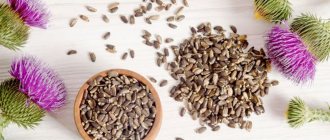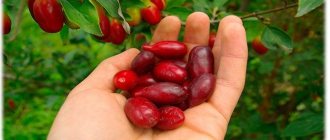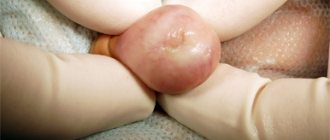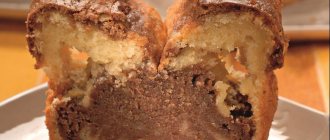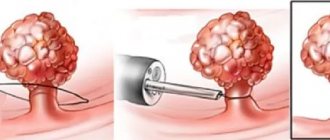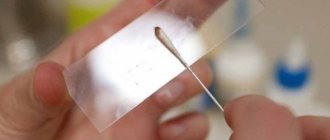The weedy herbaceous plant blue cornflower is a member of the Asteraceae family and has medicinal properties. It can almost always be found in fields sown with rye, wheat, flax, potatoes and other crops, on roadsides, and along forest belts. In addition to spontaneous spread, cornflowers are also grown specifically for decorative purposes and the manufacture of medicines.
The main plant material used in folk medicine is blue cornflower flowers. They are not very large in size, colored blue or light blue, appear in late spring and persist until the end of autumn. For some diseases, the seeds of the plant, which ripen by the end of summer, are also used for medicinal purposes.
Where does it grow and what does it look like?
Cornflower belongs to herbaceous plants from the Asteraceae family. Scientific name: Centaurea. Widely distributed throughout Europe. Usually considered a weed among cereal fields. There are especially many in fields where rye or wheat are grown.
Found on roadsides, forest edges, clearings, meadows. Looks great in flower beds near houses.
Several species grow on the territory of our country, among which there are those that are listed in the Red Book and are protected by the state. There are about 500 species in the world. Many of them are grown as ornamental plants.
Cornflowers are mostly one or two-year-old plants, ranging in height from 30 to 80 centimeters. The stem is thin, pubescent and branched. Flower baskets are 2-3 centimeters in diameter.
In addition to the well-known blue cornflower, there are flowers with other colors. Blue or field cornflower and meadow cornflower are often used for medicinal purposes.
A good honey plant. From one hectare you can collect up to 300 kg of useful honey. Cornflower honey contains a lot of lysozyme, one of the components of the immune system.
Cornflower flowers are used as a natural blue dye for Easter eggs. According to the language of flowers, it means loyalty and kindness. The Slavs believed that a girl who, working in the field, would collect a lot of blue cornflowers would have a quick marriage.
Growing
Growing and planting cornflowerCornflower is a magnificent representative of the Asteraceae family, which can become an... not a difficult task. As already mentioned, the wild “blue flower” is mostly a weed, so it does not require painstaking care, has excellent survival rate and can withstand bad weather.
However, if you want to achieve several blooms per season and large inflorescences, you need to know some of the subtleties of planting cornflower. Cornflower is a magnificent member of the Asteraceae family, which can turn id... blue.
First, decide on the planting site. Cornflower Cornflower is a magnificent representative of the Asteraceae family, which can become an i... loves sunny and windless areas, because with a lack of sun it stretches upward, its flowers become smaller, and in strong winds it is prone to lodging. Therefore, choose sunny, windless areas.
The only requirement for soil is that the soil is not swampy and fertile. If you plan to plant several different plants to form a composition, then the first rows should belong to cornflowers. Cornflower is a magnificent representative of the Asteraceae family, which can become an ideal... so that the shadow from other plants does not fall on them. The only variety of cornflowerCornflower is a magnificent representative of the Asteraceae family, which can become id... blue, which is able to tolerate shade can be called “CornflowerCornflower is a magnificent representative of the Asteraceae family, which can become id... soft,” but it will also suffer from a lack of sunlight and become smaller year after year.
Planting blue cornflowerCornflower is a magnificent representative of the Asteraceae family, which can become an ideal... you can do it in a row, or in a checkerboard pattern, or in pots, the main thing is to give each specimen plenty of space. If you intend to plant the plant in rows, then follow the “step” at least 45 cm between flowers.
Proper planting and adherence to agricultural technology will give you a plant that is not only healthy, but also healing. Indeed, on fertile soils and with good care, the plant fully reveals its medicinal potential, accumulates valuable microelements and retains them.
Purchased cornflower seedsCornflower is an excellent representative of the Asteraceae family, which can become id...blue, it is better to sow it in the spring, when the earth has warmed up enough, sowing in beds about 2 cm deep, without thickening. The first shoots will appear within a week; it is better to thin out densely growing seedlings immediately.
If you are planting cornflower seedlings, then plant them in holes no more than 10 cm deep, based on the size and length of the roots (the soil should completely cover them, covering three centimeters of the stem).
Keep the distance between seedlings in increments of 30-40 cm.
Flowers are propagated by seed; after flowering, the cornflower is a magnificent representative of the Asteraceae family, which can become... a seed pod is formed, which, after ripening, will be ready to give you new seeds for planting.
The unpretentiousness of the plant makes it possible for even beginners and inexperienced gardeners to grow it, and its endurance and vitality will save you from painstaking care. Cornflower Cornflower is a magnificent representative of the Asteraceae family, which can become an ideal... blooms for a long time and fits perfectly into any landscape, giving it brightness and airiness. And thanks to its ability to survive, the plant is suitable for absolutely any planting, both in open ground and in greenhouse conditions.
Beneficial features
The flower has long been used for medicinal purposes. Contains many substances valuable for human health. The following were found in the chemical composition:
- Mineral salts of potassium, magnesium, manganese, iron, calcium, copper, chromium, cobalt, vanadium, selenium, boron;
- Vitamin C;
- Coumarins;
- Glycosides;
- Bitterness;
- Tannins;
- Phenolic compounds;
- Anthocyanins;
- Saponins;
- Flavonoids;
- Essential oil.
Flavonoids (primarily anthocyanins), coumarins are compounds with antioxidant properties. Neutralizes the effects of free radicals.
Manganese and magnesium have a positive effect on the functioning of the nervous system.
Ascorbic acid or vitamin C is a vitamin responsible for the body's resistance to infections. Participates in the processes of hematopoiesis and collagen synthesis. Activates the activity of the endocrine glands.
Coumarins help reduce blood clotting.
Legends
Many legends are associated with the origin of cornflower. According to one of them, the centaur cured a wound inflicted by Hercules with the juice of the plant. According to Roman beliefs, a certain young man named Cianus wore dark blue clothes. The goddess Flora did not like this, and she turned him into a flower. And in Ukraine they say that once a peasant named Vasily was mowing rye. The mermaid liked him and decided to bewitch him. Vasily followed her, spellbound. And she, not wanting to let go, turned him into a cornflower (photo of flowers in front of you), which resembles water in color.
Medicinal properties and uses
Blue cornflower has the following properties:
- Decongestants;
- Anti-inflammatory;
- Astringents;
- Laxatives;
- Emmenagogenous;
- Mild diuretics;
- Choleretic;
- Antibacterial;
- Antitussives;
- Antispasmodic;
- Tonic;
- Antioxidant;
- Calming.
Stimulates the production of saliva and gastric juice.
Cornflower flowers are used for urinary tract diseases:
- Nephrotic edema;
- Circulatory failure;
- Inflammation of the urinary tract;
- Problems with scanty urine output.
Aqueous extracts of flowers have a fairly strong diuretic effect, increasing (sometimes several times) the amount of urine. This effect is associated with the blue color of the petals, which contain anthocyanins.
For internal use it is recommended for:
- Diarrhea;
- Dyspepsia;
- Diseases of the kidneys and bladder.
For external use - for irritation and inflammation of the eyes.
Vodka tincture of leaves and seeds is effective against plague, all infectious diseases, and ulcerative fever.
Traditionally used to treat the stomach, kidneys, gallbladder and liver.
Helps regulate the menstrual cycle. Increases resistance to infections. Effective for washing wounds.
The infusion is used to treat:
- Mouth ulcers;
- Bleeding gums;
- Dropsy;
- Constipation;
- Irritation and inflammation on the skin;
- Conjunctivitis;
- Red eyes.
Botanical description
The flowers of blue cornflower, according to the description of the botanical characteristics of the plant, are collected in single baskets, the diameter of which does not exceed 3 cm. They have a common involucre formed by membranous brown leaves with a tiled arrangement. Small flowers in a basket are divided into two types: marginal and internal. The flowers located at the edges of the peduncle are blue, funnel-shaped and asexual. The inner flowers are painted in a bright and rich blue-violet color, have a tubular shape and are bisexual.
The fruits of blue cornflower are an ash-colored or gray-yellow achene with an obovate shape. It has a smooth shiny surface. At one end there is a red tuft of hard bristly hairs, the length of which is slightly less than the length of the fruit itself (2.5 - 4 mm).
The stem is erect and branched and can reach 1 m, but usually its height is no more than 80 cm. The arrangement of leaves on the stem is sequential. They have a narrow and elongated shape, solid at the top of the stem and lobed at the bottom. The stem and leaves are covered with fine cobwebby hairs. The plant has a very developed root system, represented by a thin taproot.
Use in folk medicine
The medicinal properties of the plant have long been used in folk medicine. Antipyretic and diuretic drugs are prepared on its basis. Even the ancient physician Galen treated patients with kidney diseases with cornflower.
Medicines prepared from cornflower flowers are used internally and externally to treat:
- Urinary tract infections;
- Cystitis;
- Kidney diseases, including glomerulonephritis and pyelonephritis;
- Kidney stones;
- Edema associated with the kidneys;
- Liver diseases;
- Conjunctivitis;
- Oral mycosis;
- Inflammation of the mucous membranes;
- Sore throat.
Externally used against:
- Dandruff;
- Eels;
- Seborrhea;
- Vascular skin.
Recipes for using cornflower
Decoctions, infusions, teas, and alcohol extracts are prepared based on the herb.
Infusion with cornflower
Pour 1 tablespoon of herb into a glass of boiling water. Cover and leave for 15 minutes. Drink half a glass between meals. The infusion helps with urinary tract diseases, cystitis, and kidney stones. Suitable for rinsing the head against dandruff.
Infusion for diarrhea
Pour 3 teaspoons of cornflower into 400 ml of hot water. Leave for several hours. Drink 100 ml 4 times a day before meals. The infusion also helps with abdominal pain and kidney diseases.
Cornflower decoction
Pour 1 teaspoon of flowers into a glass of water and boil for several minutes. Leave for an hour. A decoction in the form of compresses is used for fatigue, inflammation, and redness of the eyes.
Take a tablespoon orally three times a day, an hour before meals, for sore throat, bronchitis, and laryngitis.
Vodka tincture
Pour 5 tablespoons of flowers into 500 ml of vodka. Leave in a dark place for 10-14 days. The tincture is drunk as a diuretic for swelling, to improve immunity. Take a few drops diluted with water before meals.
Infusion for kidney diseases
Brew 1 teaspoon of flowers with 200 ml of boiling water. Leave for 15 minutes. Drink as a diuretic and choleretic agent for kidney diseases, divided into three doses. The course of treatment is no more than 20 days.
Infusion for bathing
Brew 4 tablespoons with 1 liter of boiling water. Leave for 15 minutes. Pour into the bath. The bath has anti-inflammatory and antibacterial properties for skin diseases.
In the form of warm compresses it helps relieve rheumatic pain. Moisten a napkin in the warm infusion and apply to the problem area. Cover the top with film and insulate. Such compresses are a good way to relieve muscle pain during hard workouts in the gym.
Caring for cornflower crops
The flower is unpretentious, adapts perfectly to any climatic latitudes and grows on different soils, sometimes unsuitable for flowering crops. Winter period for cornflowersCornflower is a magnificent representative of the Asteraceae family, which can become... not scary (the plant is frost-resistant), and flowering can please the eye from May to July.
The plant does not need hilling, treatment or protection from insects, and there is no need for frequent weeding either. The flower is not susceptible to disease. For such durability, Cornflower Cornflower is a magnificent representative of the Asteraceae family, which can become the id... blue has been recognized by many gardeners as a “win-win” floriculture crop, which everyone can grow.
Light, warmth and moist soil, these are the three postulates that must be observed when planting cornflower. Cornflower is a magnificent representative of the Asteraceae family, which can become an ideal... A warm, sunny area and regular watering are all the conditions for favorable growth and flowering.
For abundant flowering and large buds, Cornflower Cornflower is an excellent representative of the Asteraceae family, which can become i... you should feed it during the spring awakening and make sure that at the early stage of the plant’s growing season there are no weeds nearby. Any mineral or organic fertilizer is suitable as a top dressing.
To develop a strong root system, especially on heavy clay soils, cornflowerCornflower is an excellent representative of the Asteraceae family, which can become an ideal... loosening, which should be carried out at least once a week, will not hurt.
Pruning and shaping the plant is not required, but is not prohibited. After the end of flowering, dried flowers should still be torn off so as not to spoil the overall appearance. A species is an evolutionarily developed set of individuals, characterized by a single ... flower bed.
Perennial cornflowersCornflower is a magnificent representative of the Asteraceae family, which can become i... they bloom without replanting for more than 5 seasons and do not become smaller; they bear fruit from the second year of the growing season. Reproduction of cornflowersCornflower is a magnificent representative of the Asteraceae family, which can become an id... perhaps by seed and by dividing the bush.
After the completion of the flowering cycle, in the fall, cornflowersCornflower is a magnificent representative of the Asteraceae family, which can become i... it is better to prune at the root so as not to infect the root system with a putrefactive infection or fungus.
Application in cosmetology
Cornflowers are valued in cosmetology. Tanning and other compounds impart:
- Antibacterial;
- Anti-inflammatory;
- Astringents;
- Antioxidant
properties.
Especially useful for oily acne-prone skin with enlarged pores. Tanning compounds help strengthen the walls of blood vessels and reduce the appearance of vascular networks on the face. Antioxidants slow down the aging process.
The use of cornflower-based products allows you to slightly lighten the skin. Moisturizes and softens. Relieves irritation. Lotions get rid of dark circles under the eyes.
Baths with herbal decoction help in case of fungal and inflammatory diseases.
Suitable for problems with hair and scalp. Rinsing with infusion gets rid of unwanted yellowness after dyeing your hair blonde. Often used by women with gray hair, it gives a beautiful shade.
Used to combat:
- Dandruff;
- Ringworms remove hair from the scalp;
- Seborrheic dermatitis.
The infusion is prepared from a tablespoon of flowers brewed with a glass of boiling water. It is used in the form of compresses for wrinkles. Masks have a regenerating effect and tighten the skin.
Contraindications
Blue cornflower is a low-toxic substance , therefore, in order not to cause harm to yourself in addition to the benefits of taking it, it is necessary to alternate periods of use and short breaks. Infusions should not be taken orally if:
- pregnancy or breastfeeding;
- uterine or gastric bleeding;
- intolerance to components.
The components of the plant can accumulate in organ tissues, so before taking it or combining it with other drugs, you should consult a doctor.
Magic
This plant is credited with magical properties. They say that flowers can protect people from evil spirits. For example, on the day of Ivan Kupala, girls wash themselves with infusion from this flower so that evil spells cannot overcome them. And on the wedding day, the bride and groom were baptized with a bunch of cornflowers. It is customary to consecrate them on August 14, the day of Makovei or the First Savior. They also make wreaths from them and keep them at home for a whole year. Cornflower is also mentioned in folk songs. Medicinal properties and contraindications have long been known in folk medicine. Even Hippocrates knew about this flower. It is still used today in the treatment of many ailments.
Science has about 700 plant species. Flowers are not only blue, but also white, black, yellow and purple. However, the classic cornflower is blue in color.
